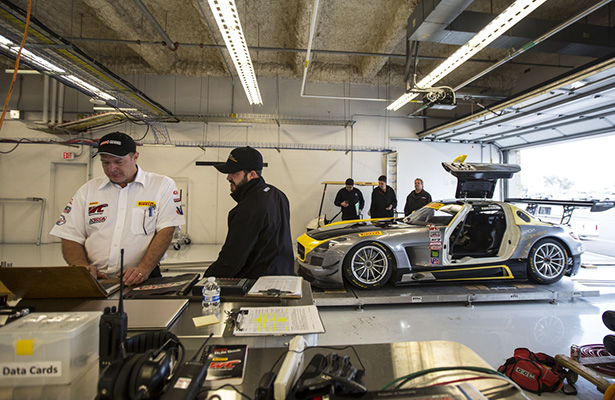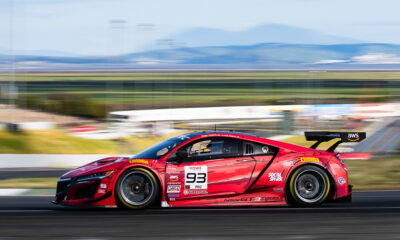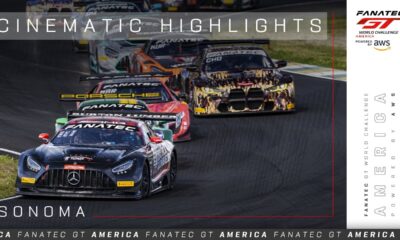
Photo: Brian Cleary/BCPix.com
This weekend’s Pirelli World Challenge season opener at Circuit of The Americas marks a fresh start of sorts for the series’ Balance of Performance, with the full integration of the BoP developed by SRO Motorsports Group.
While often being a controversial topic in past seasons, the PWC competition department, led by Marcus Haselgrove, has entered into a partnership with the creators of the highly successful FIA GT3 platform to implement and control the BoP in the GT and GTS classes this year.
“It’s a very good relationship we have,” Haselgrove told Sportscar365. “Last year we were already working with data sharing, particularly with the GT3 cars.
“Even though publicly it wasn’t out there, we were working hard together in the background through 2015.”
Formally announced in November, the technical alliance between the two organizations has resulted in an increased presence of SRO staff, including technical director Claude Surmont, at most PWC events this year.
One of the biggest changes for PWC competitors is the move to the SRO’s track-specific variable BoP system, which groups circuits into four different BoP categories depending on the track characteristics.
COTA, for example, is a Category B track, the same as Spa and Paul Ricard, while Category A is reserved for high-speed tracks like Monza.
Haselgrove said the complete list of PWC track categories will be completed prior to the second round of the season in St. Petersburg next weekend.
“This is the great thing,” Haselgrove said. “We feed it all into the track classification.
“Once we say this is a particular track, then from that we take all the data from all the different places where the track classifications are the same.
“It gives you a much better representation of what the vehicle is doing in those situations.”
Haselgrove feels the biggest gain in utilizing SRO’s global BoP system is that data is no longer limited to a single series but instead across multiple championships on all corners of the globe.
SRO’s BoP is now being used in no fewer than four GT3 series worldwide, including Blancpain GT, the GT3-spec cars in Super GT, as well as events such as the Liqui-Moly Bathurst 12 Hour and Sepang 12 Hours.
“The fact is that we share data from the same platform across multiple continents,” Haselgrove said.
“The manufacturers have come in and have been very positive about how they can look at a benchmark of their cars and their customers in different championships.
“It’s very easy to draw from the [global] database. This is the real advantage for us.”
According to SRO founder and CEO Stephane Ratel, having the extra data from the U.S. also helps validate its global BoP.
“With our active role in Japan to Australia to Europe and here, we have so much input of so many different drivers, so many different teams, with the same car, that you can offer something that’s fair and indisputable,” Ratel told Sportscar365.
“It’s easy to say, ‘Gentlemen, you may not be happy [with your BoP], but the same car with the same BoP on the same type of circuit is winning races. Maybe you should look at your problem and not always put it on the back of BoP.'”
While SRO has been contracted to develop and enforce the BoP, the PWC competition department still plays a role on the technical side with Haselgrove having attended the SRO’s BoP test at Paul Ricard last weekend.
All new and existing GT3 and GT4-spec machinery were put through its paces in a controlled environment with SRO test drivers driving each of the cars.
“There were some very exciting things from being at the test,” Haselgrove said. “There’s some things that we already do the same.
“There’s certain other elements, such as refueling, that we don’t do but the process used removes any variables or area of interpretation.
“They look at all the typical metrics specifics of acceleration, cornering, longevity of the tire, They also have a very good compliance of the homologation procedure for all the measurements.
“And to be able to do them with reference drivers… Let’s be honest, as we move forward, we will use reference drivers. The more you can make it the same, the more validity for the manufacturers for the data.”
While the Cadillac ATS-V.R or the G3-homologated Acura TLX GT were not present at the test for logistical reasons, both cars were evaluated in a test at COTA last month, also overseen by SRO’s Surmont.
Unlike previous seasons that saw BoP adjustments virtually every race, Haselgrove said the variable track classifications reduces the need for as many changes that were made in previous years.
And if an adjustment is made, it would be applied to the SRO’s global BoP and not specifically for PWC.
COTA marks the first race with SRO’s 2016 BoP, as last month’s Bathurst 12 Hour was run according to last year’s BoP table.

























